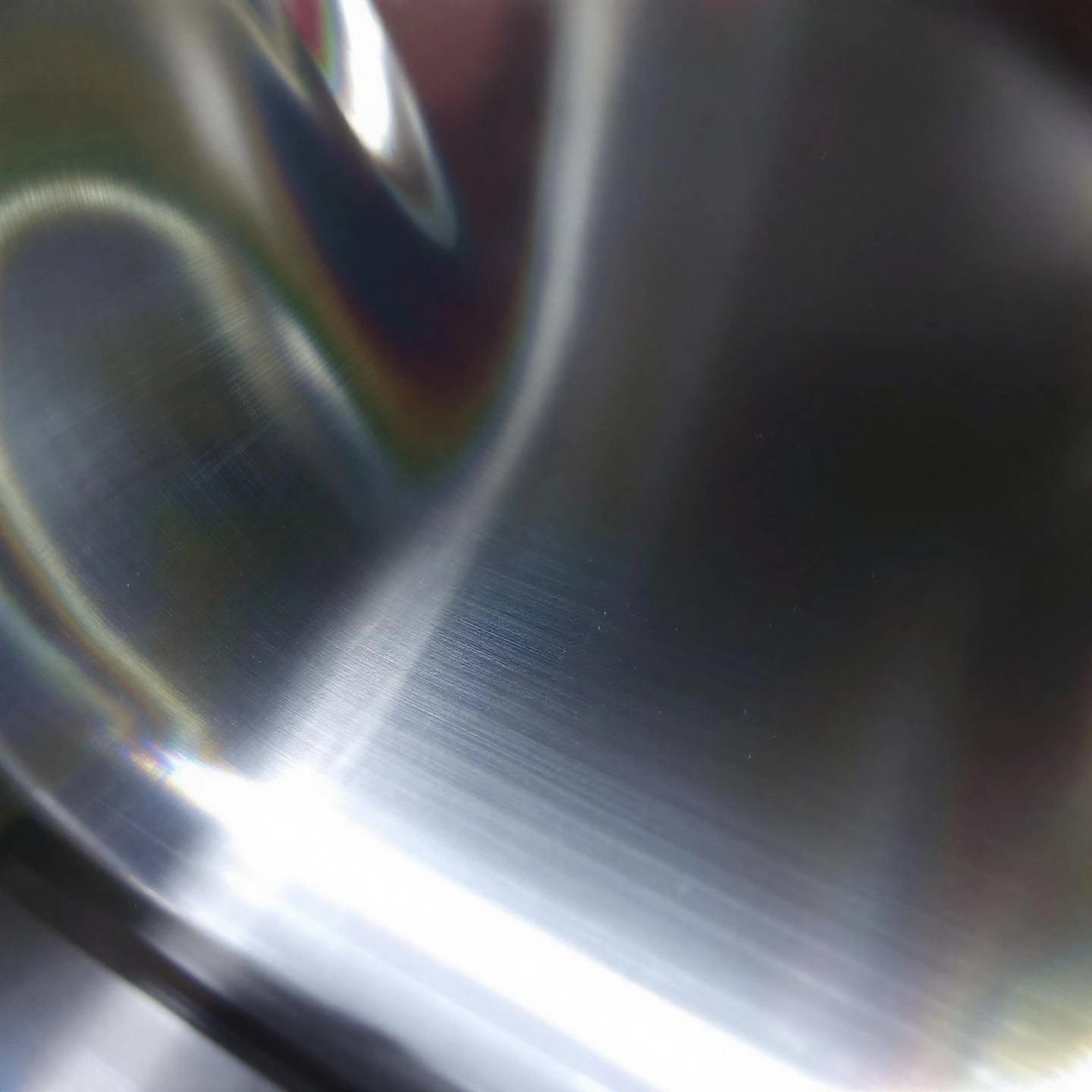
Have you ever noticed your once-shiny aluminum wheels, boat pontoons, or truck parts looking dull, chalky, or stained? Over time, exposure to air, moisture, and road grime can leave aluminum surfaces looking tired and worn. That’s where an aluminum brightener comes in—a specialized chemical solution designed to cut through oxidation, grime, and stains, revealing the clean, reflective metal beneath.
Sounds complex? It’s actually a straightforward process. Aluminum naturally forms a thin layer of oxidation (aluminum oxide) as a protective barrier. While this layer helps prevent deeper corrosion, it also makes the surface appear faded or cloudy. Everyday cleaning methods—like soap and water—often aren’t enough to restore that factory-fresh shine. This is where aluminum brighteners shine (literally and figuratively), as they’re formulated to dissolve and remove the dull oxide layer, along with stubborn dirt and contaminants.
This comprehensive guide is designed to help you:
Imagine bringing back the luster to your aluminum surfaces with confidence. By the end of this guide, you’ll have the knowledge to select, use, and maintain aluminum brighteners for a flawless, long-lasting shine.
Ever wondered why your aluminum surfaces lose their shine over time, even with regular washing? The culprit is a thin, invisible layer called aluminum oxide. This layer forms naturally as aluminum reacts with oxygen in the air, creating a protective barrier. While this oxide helps prevent deeper corrosion, it also gives aluminum a dull, chalky appearance that basic soap and water can’t fix.
This is where an aluminum brightener steps in. Unlike standard cleaners or degreasers, a brightener for aluminum is specifically designed to tackle that stubborn oxide film. These products use carefully formulated acids or chemical agents that react with the oxide layer, dissolving and lifting it away. The result? You’ll notice the original, bright metal underneath—restoring that like-new shine.
Let’s break it down:
Think of it like exfoliating your skin—removing the old, dull layer to reveal what’s underneath. This process is far more effective than soaps or degreasers, which simply lift away surface dirt but leave the oxidized layer untouched.
It’s a common question: if regular cleaning products can remove dirt and grease, why bother with a specialized aluminum brightener? Here’s why:
Imagine looking at aluminum under a microscope. The surface appears rough and uneven after years of exposure. An aluminum brightener chemically “etches” away this roughness, smoothing out the surface and preparing it for further treatment (like polishing or waxing). This etching is controlled—removing just enough material to refresh the look, but not enough to harm the integrity of the metal.
In summary, brighteners for aluminum work by targeting the very layer that causes dullness. They don’t just clean—they renew. But because they use potent chemicals, it’s crucial to use them with care, as you’ll discover in the next section on the role of acids in these formulas.
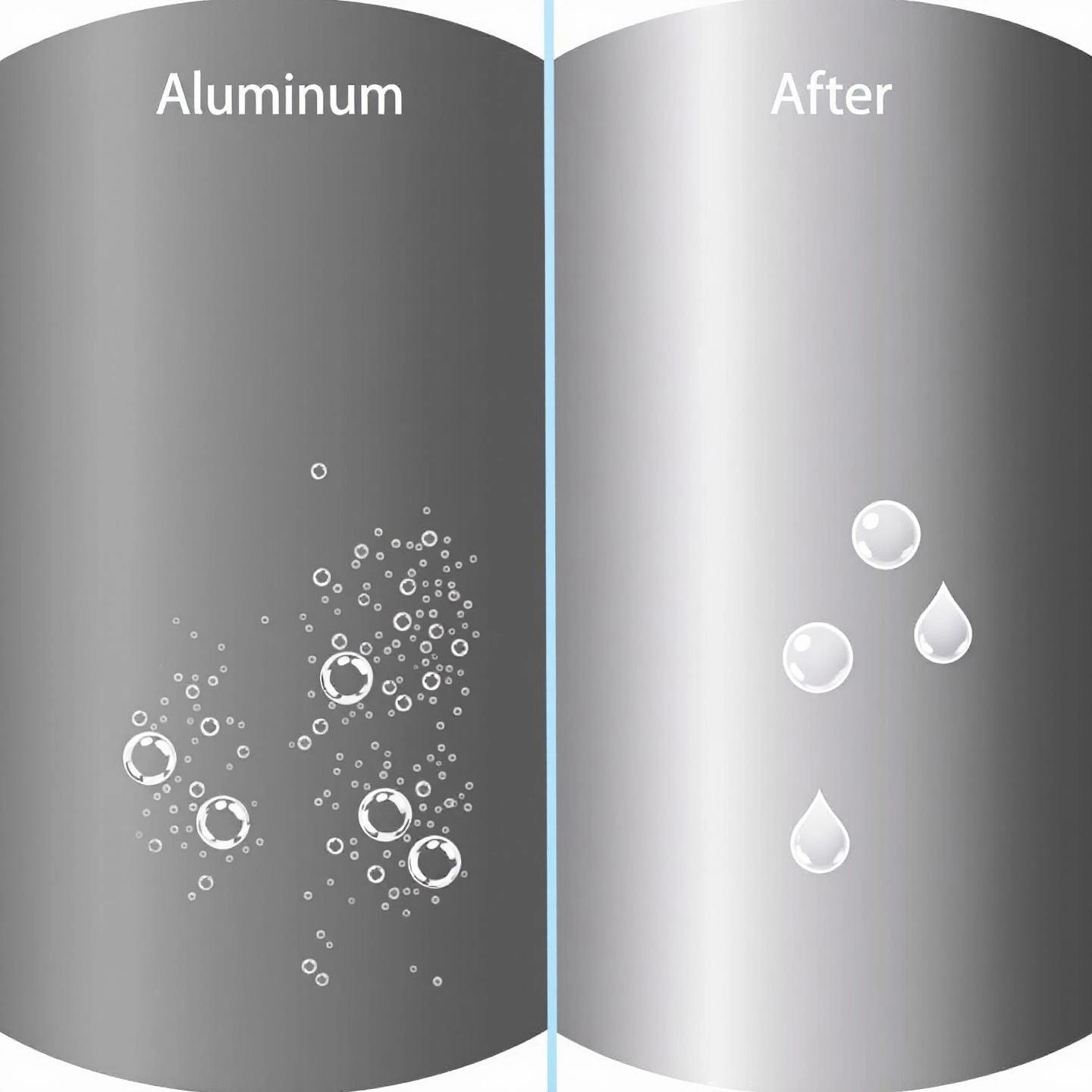
When you reach for an aluminum brightener acid solution, you’re tapping into the power of chemistry to restore shine to tired, oxidized metal. Sounds technical? Let’s break it down. The secret behind most acid aluminum brightener products lies in their carefully chosen blend of acids. These acids are responsible for dissolving the stubborn oxide layer and stains that regular cleaners simply can’t touch.
But why acids? Aluminum oxide, the dull layer hiding your metal’s shine, is tough and chemically stable. Acids react with this layer, breaking it down and freeing the clean aluminum underneath. The challenge is to use just enough acidic strength to remove oxidation without damaging the metal or creating safety hazards. That’s where the science—and art—of formulating aluminum brighteners comes in.
Not all acids are created equal. Some are powerful and fast-acting, while others are gentler and better suited for delicate surfaces. Here’s a closer look at the acids you’ll often find in these formulas:
Here’s a quick summary table for easy reference:
| Acid | Role in Formula | Typical Use |
|---|---|---|
| Hydrofluoric Acid (HF) | Rapidly dissolves aluminum oxide and heavy stains | Industrial, heavy-duty cleaning |
| Sulfuric Acid | Enhances cleaning and oxidation removal | General cleaning, combined with other acids |
| Phosphoric Acid | Controls reaction rate, prevents over-etching | Balanced cleaning, safer for surfaces |
| Hydrochloric Acid | Boosts acid strength, rapid oxide removal | Specialized or controlled formulas |
| Citric Acid | Regulates pH, gentle cleaning | Sensitive or acid-free applications |
| Oxalic Acid | Removes mineral deposits, fine oxidation | Finishing, paired with citric acid |
Ever wondered why some aluminum brighteners are labeled “acid-free” or “mild”? Not every job calls for the power of hydrofluoric or sulfuric acid. For example, products like Metal Brite avoid hydrofluoric acid entirely, using a blend of milder acids to clean and brighten without the risk of aggressive etching. These solutions are ideal for large aluminum surfaces where a softer touch is needed, or for users concerned about safety and environmental impact.
Here’s what to keep in mind:
In summary, understanding the acids in your aluminum brightener helps you choose the right product for your needs—balancing cleaning strength with safety and surface protection. Up next, we’ll explore how to decide between a dedicated brightener and a 2-in-1 cleaner, so you can match your choice to your specific aluminum care challenge.
When you’re standing in the cleaning aisle or scrolling through online options, you’ll notice two main types of products: dedicated aluminum brightener cleaners and those labeled as aluminum cleaner and brightener combos. Wondering which one is right for your project? Let’s break it down so you can make a confident, informed choice.
Imagine you have a heavily oxidized pontoon or a set of dull truck wheels. Will a general cleaner do the trick, or do you need something more specialized? The answer depends on the condition of your aluminum and your end goal.
| Feature | Dedicated Aluminum Brightener | Aluminum Cleaner & Brightener (2-in-1) |
|---|---|---|
| Main Purpose | Removes heavy oxidation and restores shine to pre-cleaned aluminum | Cleans dirt and light oxidation in one step |
| Best Use Case | Heavily oxidized, stained, or weathered aluminum (e.g., old wheels, pontoons) | Routine maintenance for lightly soiled or mildly oxidized surfaces |
| Cleaning Power | High (targets oxidation and stains only) | Moderate (removes dirt, grease, and some oxidation) |
| Application Frequency | Occasional, as needed for restoration | Regular, as part of ongoing maintenance |
| Surface Prep Needed? | Yes—surface should be free of dirt and grease before use | No—cleans and brightens in one step |
| Risk of Overuse | Higher—can cause surface damage if overapplied or misused | Lower—formulated for frequent, safe use |
Still unsure? Consider how often you clean, the current state of your aluminum, and whether you’re aiming for a deep restoration or simple maintenance. Choosing the right formula sets the stage for a brilliant, lasting finish—and up next, we’ll explore the top-rated products that can help you achieve that showroom shine.
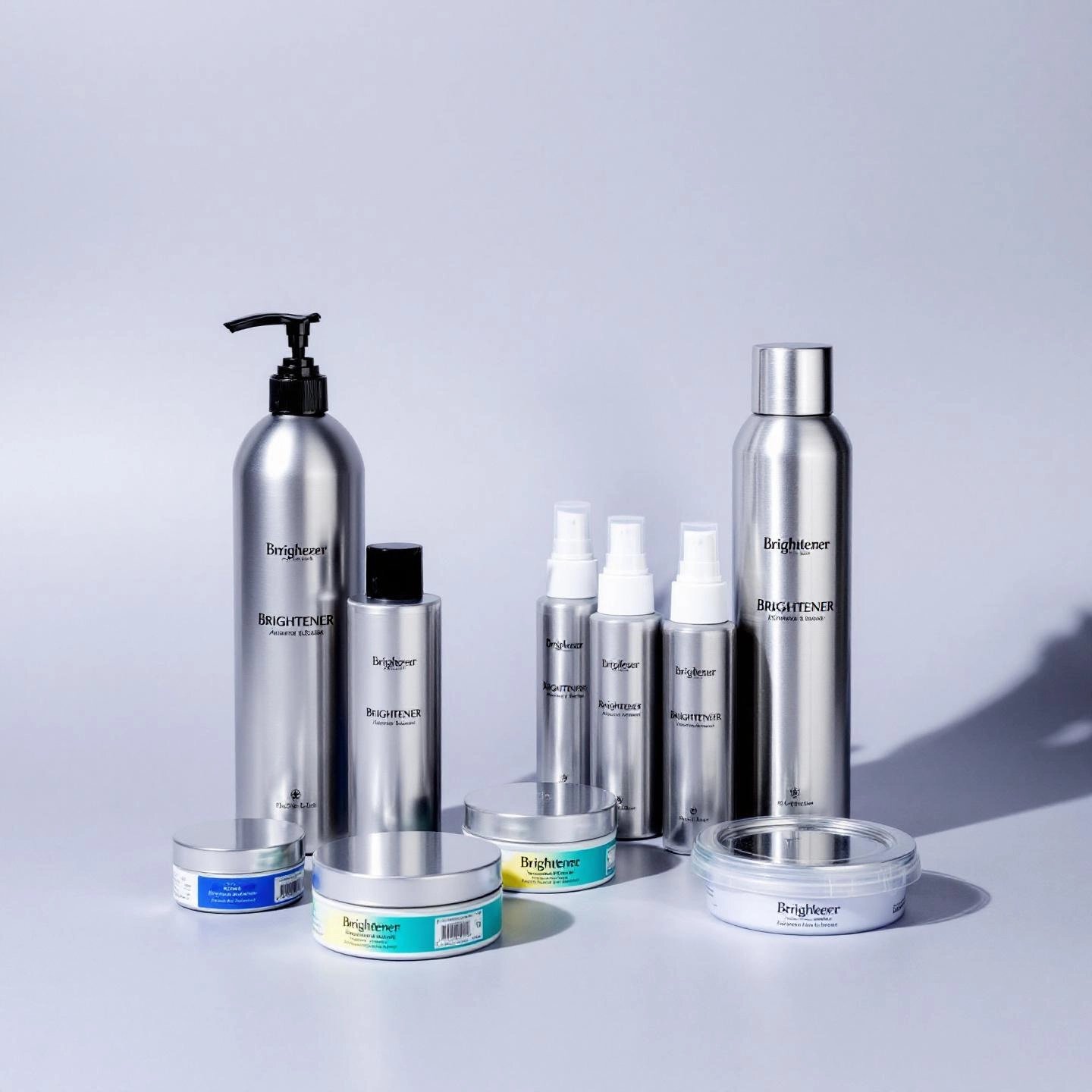
When you’re after that mirror-like finish on your wheels, truck tanks, or pontoons, not just any product will do. The best aluminum brightener combines powerful oxidation removal, safe application, and ease of use—without hours of scrubbing. But with so many choices on the market, which ones truly deliver a flawless shine?
Imagine you’re prepping your semi-truck for a big haul or getting your pontoon ready for summer—wouldn’t you want a brightener that works fast, restores shine, and is trusted by pros? Let’s break down the top-rated options, drawing on expert reviews, brand reputation, and proven results for a variety of aluminum surfaces.
Still wondering which product fits your project? Consider these factors:
Choosing the best aluminum brightener means matching the product’s strengths to your specific surface and level of oxidation. With the right pick, you’ll spend less time scrubbing and more time enjoying that flawless, mirror-like shine.
Up next, we’ll dive into how to select the ideal brightener for specialized applications like wheels and pontoon boats, ensuring you get professional-grade results every time.
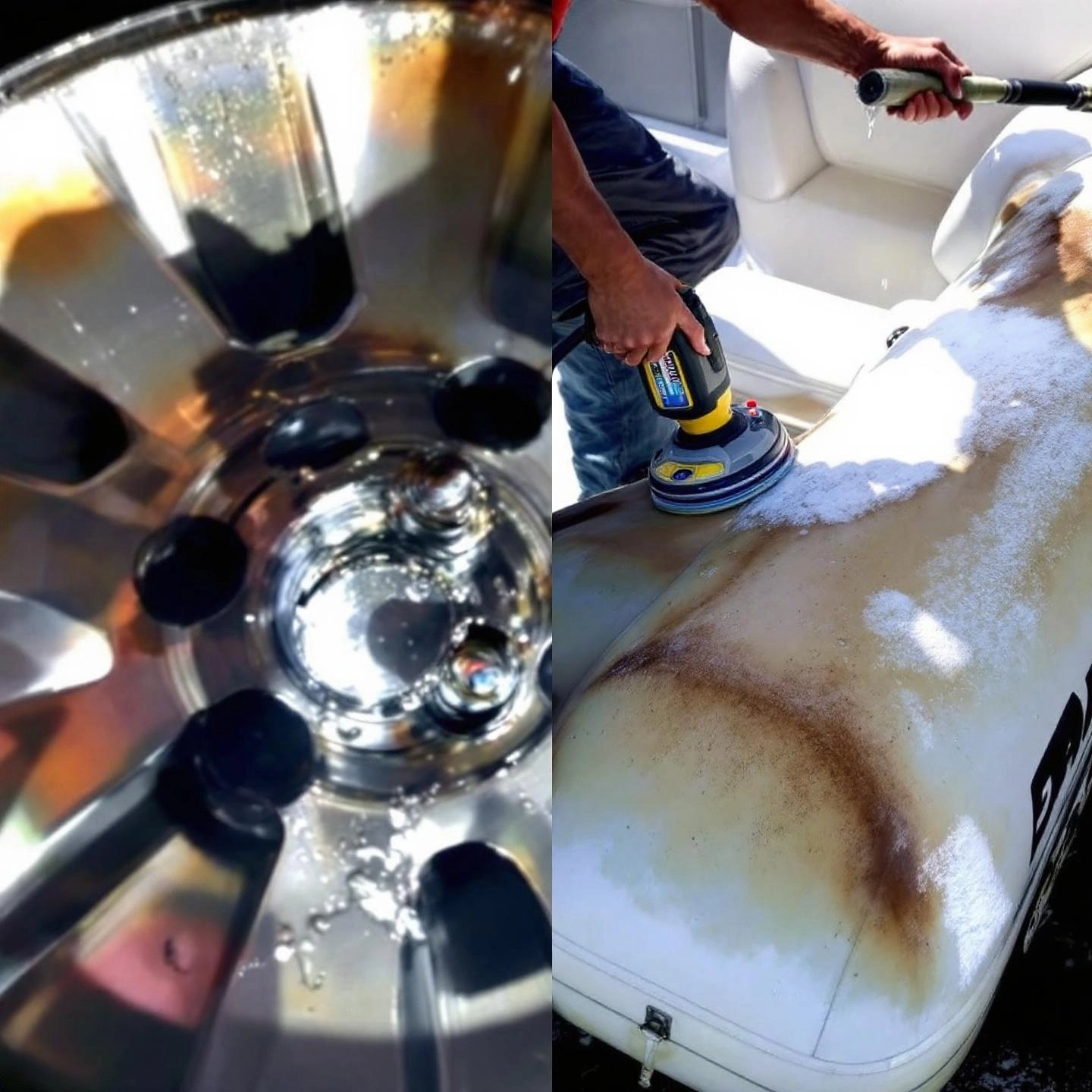
Ever wondered why your aluminum wheels lose their sparkle or why your pontoon boat’s tubes start looking chalky and stained, even after a wash? The answer lies in the unique challenges these surfaces face—and why choosing the right aluminum brightener for pontoons or an aluminum wheel brightener is so important.
Imagine pulling up to a car show or simply admiring your vehicle after a drive—only to see your once-shiny wheels dulled by stubborn brake dust and road film. Aluminum wheels, especially those without a protective coating, are magnets for:
Choosing the right aluminum wheel brightener means considering both the material and its finish. For example, products like Kleen-Shine Wheel Kleen Wheel Brightener use ammonium bifluoride instead of harsher acids, making them safe for both coated and uncoated aluminum wheels while still being tough on brake dust. For those who prefer a gentler approach, Meguiar’s Detailer Non-Acid Wheel and Tire Cleaner is suitable for nearly all wheel types, including factory-painted and chrome, and is easy to use for routine cleaning (Kleen-Rite Corp).
Here’s a quick checklist when selecting a wheel brightener:
Now, picture your pontoon boat at the dock after a season on the water. Marine growth, algae, and mineral deposits can make those aluminum tubes look anything but new. The challenge? Removing this buildup without harming the metal or the environment.
Surprisingly, some of the most effective solutions are already in your kitchen. White vinegar, a mild acid, is a go-to for many boat owners. Mixed with water, it gently dissolves oxidation and scum without scratching or corroding the aluminum. This method is not only cost-effective but also environmentally friendly, making it ideal for regular pontoon maintenance.
| Challenge | Best Solution | Notes |
|---|---|---|
| Heavy marine growth or oxidation | Vinegar-water solution (1:1 ratio) | Gentle, safe for frequent use; follow with polish for extra shine |
| Stubborn stains/mineral deposits | Commercial aluminum brightener for pontoons | Use as needed for restoration; rinse thoroughly |
For best results, clean your pontoons every 2–3 months, or more often if used in saltwater. Always rinse thoroughly and dry with microfiber cloths to prevent water spots.
Whether you’re restoring wheels to a showroom shine or keeping your pontoon boat ready for the next adventure, the right aluminum brightener makes all the difference. But it’s not just about looks—proper care extends the life of your aluminum and protects your investment.
In the world of industrial and commercial aluminum, maintaining flawless surfaces is even more critical. That’s why manufacturers like Shengxin Aluminum invest in advanced surface treatments and high-precision production standards. Their expertise in creating durable, corrosion-resistant aluminum profiles for everything from rail transit to marine applications sets the bar for quality and longevity.
So, next time you reach for an aluminum brightener—whether for your car, boat, or industrial equipment—remember: the right product, applied with care, keeps your aluminum shining and performing at its best. Up next, we’ll compare the leading brands to help you find the perfect fit for your specific needs.
Choosing the right aluminum brightener can feel overwhelming with so many brands promising a flawless shine. Ever wondered which product truly stands out for your car, boat, or trailer project? Let’s break down the top contenders—like Purple Power aluminum brightener, Superior aluminum brightener, and more—so you can make an informed, confident choice.
Imagine you’re restoring an old trailer or cleaning up your under-hood aluminum. You want a product that’s effective, easy to use, and safe for your specific application. But how do the leading brands stack up when it comes to cleaning power, concentration, and safety? Below, you’ll find a side-by-side table comparing key features, best uses, and important precautions for each brand, based on real-world experiences and expert reviews (Top Review Expert).
| Brand | Key Features | Concentration/Formulation | Recommended Uses | Safety Precautions |
|---|---|---|---|---|
| Purple Power Aluminum Brightener |
|
Ready-to-use, acid-based | Wheels, under-hood aluminum, light restoration |
|
| Superior Products Aluminum Brightener |
|
Concentrated, acid-based | Truck tanks, trailers, pontoons, industrial equipment |
|
| Aluma Brite Aluminum Cleaner & Brightener |
|
Concentrated, acid blend | Pontoons, RV siding, general aluminum restoration |
|
| Star Brite Ultimate Aluminum Cleaner & Restorer |
|
Acid blend, non-toxic | Boats, kayaks, trailers, environmentally sensitive areas |
|
Still not sure which product is right for your needs? Consider the type of aluminum surface, the level of oxidation, and whether you prefer a quick spray or a customizable concentrate. For industrial and high-volume projects, partnering with a manufacturer that specializes in advanced aluminum surface treatments—such as Shengxin Aluminum—can ensure professional, lasting results. Next, we’ll explore where to find these top brands locally, so you can get started on your project right away.
Ever found yourself searching for a napa aluminum brightener or wondering if your local parts shop has what you need? If you’re ready to revive your wheels, pontoons, or truck tanks, knowing where to buy the right aluminum brightener can make all the difference. Let’s break down your options so you can confidently walk into a store—or shop online—and get started.
Most major automotive retailers carry a selection of aluminum brighteners, each catering to slightly different needs. Here’s what you’ll typically find at the most popular chains:
Not sure which store is closest? Try searching for aluminum brightener near me online. Most auto parts retailers provide in-store pickup, curbside delivery, or even same-day shipping, making it easy to get started right away.
Here’s a quick reference table to help you compare what’s available at each retailer:
| Store | Common Brands | Product Types | Best For |
|---|---|---|---|
| NAPA | Purple Power, Aluma Brite | Concentrated, spray-on | Wheels, truck tanks, general restoration |
| AutoZone | Purple Power, Meguiar’s | Spray-on, ready-to-use | Wheels, under-hood, routine maintenance |
| O’Reilly’s | Superior Products, Aluma Brite | Concentrated, multi-purpose | Pontoons, trailers, heavy-duty cleaning |
When choosing a product, consider your surface type (wheels, pontoons, siding), oxidation level, and whether you need a quick spray or a more powerful concentrate. Store staff can often provide advice based on your specific project.
For large-scale or industrial cleaning—think manufacturing lines, commercial fleets, or marine fabrication—consumer products may not be robust or efficient enough. This is where integrated surface finishing solutions from specialists like Shengxin Aluminum come into play. Their advanced processes go far beyond what you’ll find on a retail shelf, offering tailored treatments, anodizing, and protective coatings for high-performance aluminum in construction, transportation, and beyond.
In summary, whether you’re picking up a bottle of aluminum brightener at NAPA, AutoZone, or O’Reilly’s, or partnering with an industrial provider for large projects, you have plenty of options to keep your aluminum surfaces looking their best. Up next, we’ll cover essential safety tips to ensure your cleaning process is as safe as it is effective.
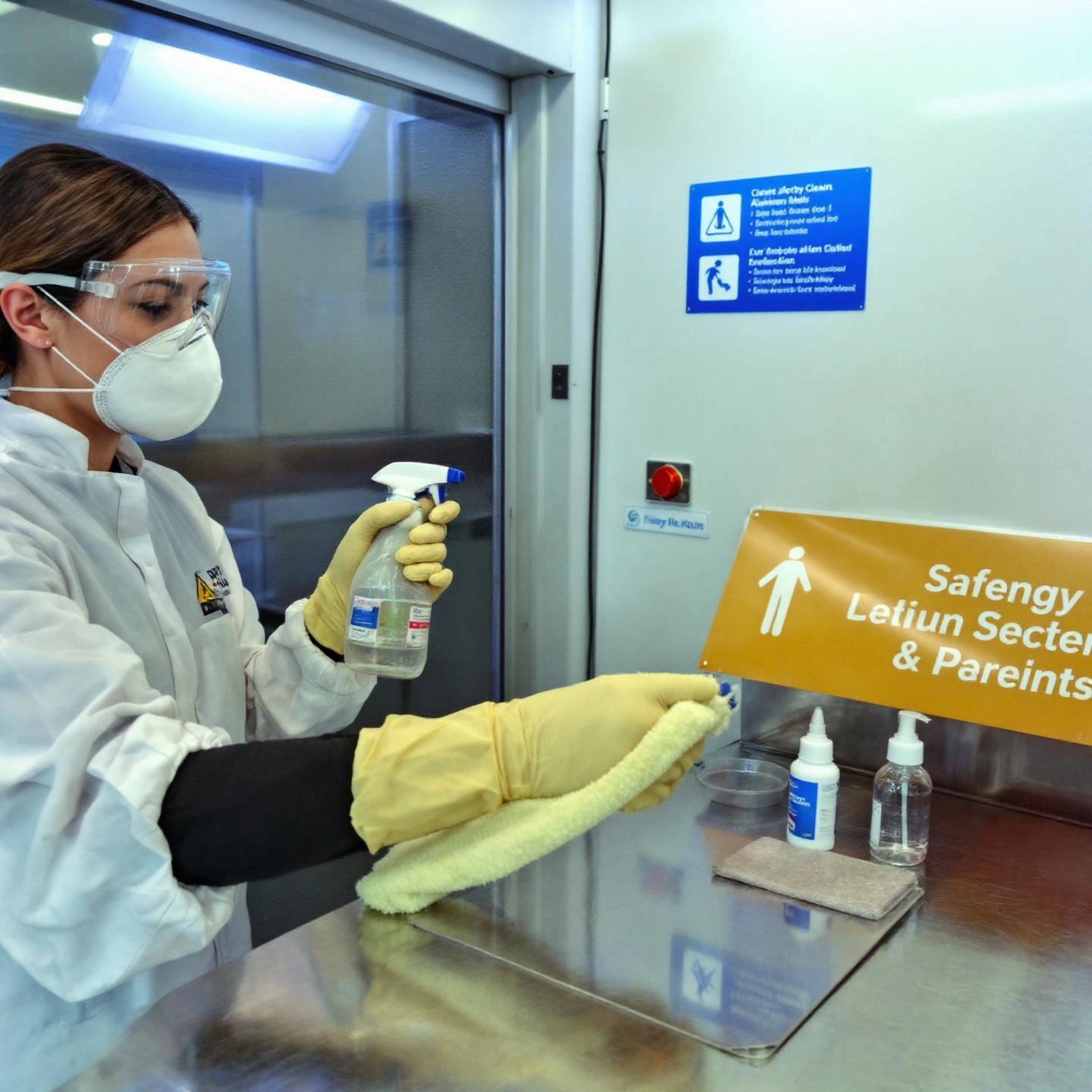
When you’re ready to restore the shine to your aluminum surfaces, it’s tempting to jump right in. But have you ever wondered what could go wrong if you skip a few safety steps? The chemicals in aluminum brighteners are powerful—designed to cut through tough oxidation and stains. That same strength means they can cause serious harm to your skin, eyes, and lungs if not handled with care (Karcher SDS). Let’s walk through the essential precautions so you can get brilliant results—safely.
Imagine you’re about to spray or brush on a brightener, and a small splash lands on your hand or near your eyes. Even a tiny amount can cause burns or irritation. That’s why personal protective equipment (PPE) isn’t optional—it’s your first line of defense. Here’s what you need every time:
Ready to get started? Follow these steps to keep yourself—and your project—safe from start to finish:
"The most common accidents with aluminum brightener happen when users skip PPE or rush the process. Taking a few extra minutes for safety can prevent burns, eye injuries, and respiratory irritation."
By following these precautions, you’ll protect yourself and your workspace—while achieving the flawless results you’re after. Next, we’ll wrap up this guide with a summary of key takeaways and tips for long-lasting aluminum care.
When you look at your aluminum wheels, boat pontoons, or industrial equipment, do you imagine them gleaming like new? With the right approach to aluminum care, that vision is well within reach. Throughout this guide, we’ve explored how selecting the appropriate aluminum brightener—and using it safely—can dramatically restore shine, remove stubborn oxidation, and protect your investment for years to come.
Imagine the satisfaction of seeing your aluminum surfaces transformed—whether you’re a weekend DIYer, a fleet manager, or an industry professional. By drawing on best practices from both consumer and industrial settings, you’ll achieve results that go beyond surface-level shine, ensuring durability and value.
If you’re ready to take your aluminum projects to the next level, consider exploring advanced solutions from leaders in the field like Shengxin Aluminum. Their expertise in innovative surface treatments and precision manufacturing sets the standard for lasting beauty and performance in aluminum products of all types.
With knowledge and the right tools in hand, you’re empowered to confidently tackle any aluminum care challenge—restoring brilliance today and protecting it for tomorrow.
Aluminum brightener uses specialized acids to dissolve stubborn oxidation and stains that regular soaps and degreasers can't remove, restoring the original shine of aluminum surfaces like wheels and pontoons.
Not all aluminum brighteners are suitable for every surface. Some contain strong acids ideal for uncoated or heavily oxidized aluminum, while milder or acid-free formulas are better for coated, sensitive, or regularly maintained surfaces. Always check product recommendations before use.
You can find aluminum brightener at major auto parts retailers such as NAPA, AutoZone, and O'Reilly Auto Parts. These stores typically carry top brands like Purple Power, Aluma Brite, and Superior Products in both spray-on and concentrated forms.
Always wear chemical-resistant gloves, safety goggles, and long sleeves. Work in a well-ventilated area, follow manufacturer instructions, and rinse surfaces thoroughly after application to avoid damage or injury.
For wheels with brake dust, use a product designed for automotive use—acid-based for uncoated wheels or non-acid for coated types. For pontoons, try a vinegar-water mix for light oxidation or a commercial pontoon brightener for tougher buildup. Match the product to your surface and cleaning needs for best results.
 online service
online service 0086 136 3563 2360
0086 136 3563 2360 sales@sxalu.com
sales@sxalu.com +86 136 3563 2360
+86 136 3563 2360